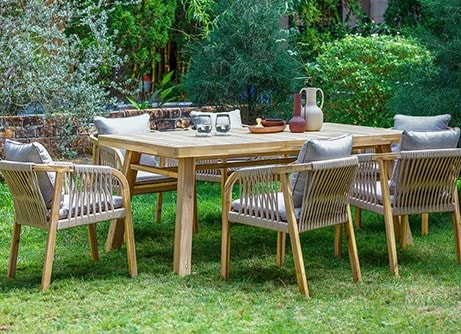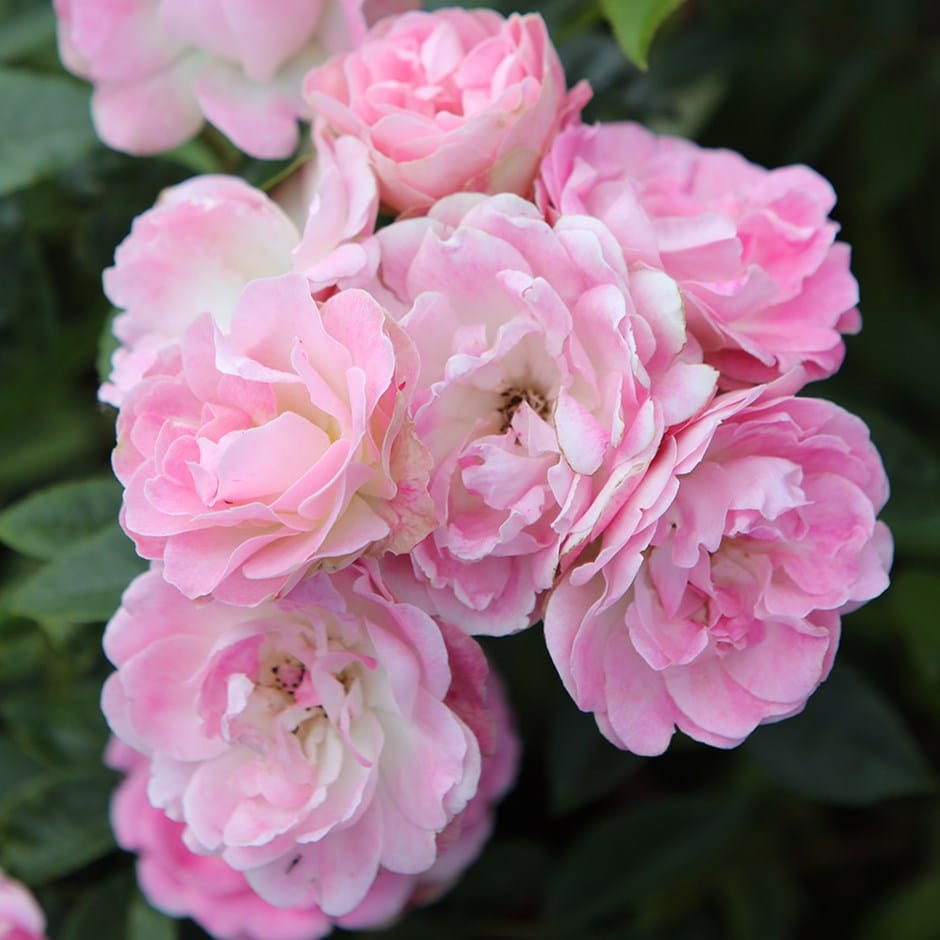Clusters of semi-double, pearly-pink flowers from July to September and glossy, mid-green leaves. This dwarf cluster-flowered bush rose is an ideal patio plant for an open, sunny site. An excellent gift to mark a pearl wedding anniversary, it's perfect for where space is limited.
All our roses are grown in an open field and then dug up when the weather conditions are right in October or November. Some suppliers send out their roses as 'bare root' plants (ie without pots or compost), but we pot ours up as it helps to keep the roots hydrated and in good condition. As they are dormant throughout the winter, they will not produce any new roots until spring, so don't be surprised if the compost falls away from the roots when you take them out of their pots. The roses can be kept in their pots throughout the winter provided they are kept well fed and watered, however ideally they should be planted out as soon as possible. They will already have been cut back so no further pruning will be required, apart from snipping off any tips that have died back. Routine pruning can begin in late winter the year after planting.
How to care for Rosa Pearl Anniversary ('Whitston') (PBR):
If planting in winter, choose a frost-free spell when the soil is not frozen. Roses are quite deep-rooted plants so dig a deep hole roughly twice as wide as the plant's roots and mix in a generous amount of composted organic matter. A top-dressing of a general purpose fertiliser can be worked into the surrounding soil and we also recommend using Rose Rootgrow at this stage to encourage better root development. This is particularly important when planting into a bed where roses have previously been grown as Rose Rootgrow is said to combat rose sickness (aka replant disease).
Remove the plants from their pots and gently spread out the roots before placing them in the centre of the hole. Try to ensure that the 'bud union' (the point where the cultivated rose has been grafted onto the rootstock, and from where the shoots emerge) is at soil level. You can judge this quite easily by laying something flat, like a spade handle or bamboo cane, across the top of the hole. When they are at the right height, back-fill the hole, firming the soil down gently before watering the plant well.
Water generously until well established, and apply a specialist rose fertiliser (following the manufacturer's instructions) each spring. They will also benefit from a generous mulch of composted farmyard manure in spring, but make sure this is kept away from the stems.
In late winter, pop on a pair of tough gloves and remove dead, damaged, diseased or congested branches completely. Then cut back vigorous shoots that spoil the shape of the plant, but avoid cutting back newly planted shrubs too hard. Cut away unproductive twiggy growth and then shorten the stems by about a third, cutting back to a healthy bud or side shoot.
Flowering period:
- Jan
- Feb
- Mar
- Apr
- May
- Jun
- Jul
- Aug
- Sep
- Oct
- Nov
- Dec
Eventual height:
0.6m
Eventual spread:
0.6m
Soil:
Moderately fertile, moist but well-drained soil, or peat-free general purpose compost
-
 This rose is deciduous so it will lose all its leaves in autumn, then fresh new foliage appears again each spring.
This rose is deciduous so it will lose all its leaves in autumn, then fresh new foliage appears again each spring.
-
 Humans/Pets: Fruit are ornamental - not to be eaten
Humans/Pets: Fruit are ornamental - not to be eaten










